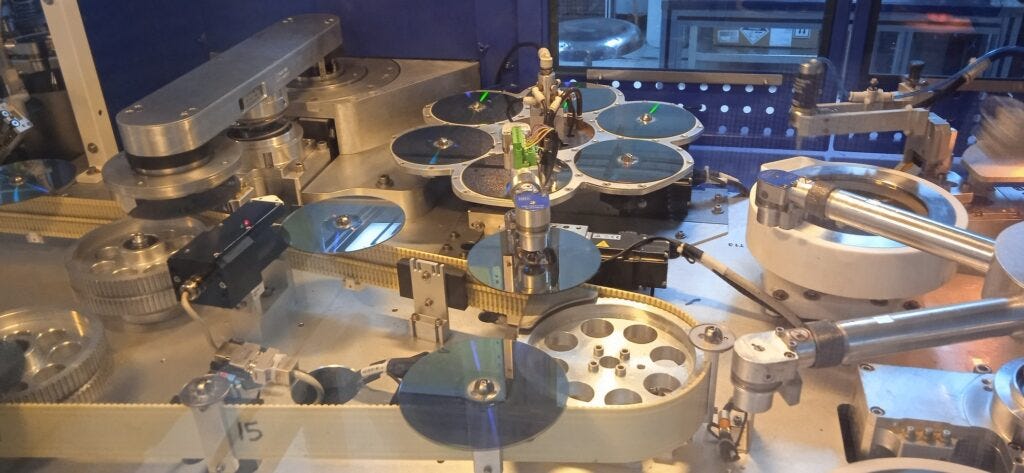The Environmental Impact of Streaming vs. Physical Media
Let's explore the environmental trade-offs between streaming and physical media and why owning your favorite movies and shows on disc might be a more sustainable choice for repeat viewings.
As the world continues to embrace streaming, it's easy to assume that it’s the more environmentally friendly way to consume media. After all, no discs are produced, no plastic is wasted, and everything happens digitally. However, the reality is far more complex, especially for fans of rewatching favorite movies and shows. In this article, I want to explore the carbon footprint of streaming versus physical media and highlight why owning your favorite shows and movies on Blu-ray might be the more sustainable choice for the long term.
The Carbon Emissions of Streaming and Physical Media
Streaming 4K Content
Streaming in 4K, particularly with HDR, demands significant data usage. On average, 4K streaming uses about 10 GB per hour. Carbon emissions from streaming 4K content typically range between 300 and 700 grams of CO₂ per hour, depending on factors like internet infrastructure, server efficiency, and energy sources.
For example:
Watching a 2-hour 4K movie results in 600–1,400 g CO₂ emissions.
Streaming a 23-minute TV episode in 4K results in 115–268 g CO₂ emissions.
Source: IEA Report on Digital Video Streaming
For an entire series like Seinfeld (180 episodes, 23 minutes each), a single run-through of the show in 4K produces a carbon footprint of approximately 20.7–48.24 kg CO₂.

Blu-ray 4K Content
Owning and watching 4K Blu-rays has a different emissions profile. The manufacturing and transportation of physical discs are front-loaded with emissions but are spread over repeat viewings. Key factors include:
The production of each 4K Blu-ray disc results in 2–3 kg CO₂ emissions.
A 24-disc Blu-ray box set of Seinfeld (8 episodes per disc) has a production footprint of 48–72 kg CO₂.
Playing a Blu-ray disc adds only 2.7–3.6 g CO₂ per episode due to electricity use.
Source: Warner Bros. LCA Study on DVDs and Blu-rays, Energy Star Ratings for Blu-ray Players, EPA Greenhouse Gas Equivalencies Calculator.
For a single viewing of the entire series, the total emissions would be approximately 48.5–72.6 kg CO₂ (manufacturing plus playback).
How Repeat Viewings Change the Equation
Streaming emissions are cumulative: you emit the same amount of CO₂ for every single viewing. Blu-ray’s emissions, on the other hand, are a one-time manufacturing cost, so the per-viewing footprint decreases with each additional run-through.
Comparing Emissions: Seinfeld (180 Episodes in 4K)
As you can see, Blu-ray becomes the more environmentally friendly choice after just two complete viewings of the series. After five viewings, the difference is significant.
Comparing Emissions: A 2-Hour 4K Movie
For a 2-hour movie, Blu-ray becomes the more sustainable option after 3–5 viewings, depending on playback emissions and manufacturing efficiency.

The Case for Physical Media Ownership
For fans of shows like Seinfeld, which is often rewatched by devoted viewers, physical media is an increasingly attractive option. The upfront production emissions of Blu-ray discs are offset after just two viewings, and their environmental impact decreases with every additional rewatch. Streaming, by contrast, incurs emissions every single time you press play, making it less sustainable over time for repeat viewing.
Physical media also provides other key benefits:
Ownership: With physical media, you own your favorite shows and movies permanently, free from the whims of licensing agreements and streaming service availability.
Quality: Blu-ray discs offer the highest quality video and audio without the compression that affects even the best streaming services.
Longevity: Unlike digital libraries that can disappear due to platform changes, your physical collection is yours for life.
For collectors and fans who value rewatchability and ownership, physical media is both a sustainable and satisfying choice.
So, What’s Better? Well, It Depends…
The environmental impact of streaming versus physical media isn’t a simple binary choice. It depends on how you consume your favorite content. Streaming shines as a convenient, efficient option for discovering new films and shows or enjoying something as a one-time watch. It offers unparalleled flexibility and accessibility, especially for content you’re unsure about committing to.
On the other hand, physical media becomes the more sustainable choice for titles you know you’ll revisit time and time again. For dedicated fans of long-running shows like Seinfeld or for movie enthusiasts who regularly rewatch their favorites, owning physical copies reduces the environmental footprint over time. It also gives you the added benefits of higher-quality viewing, true ownership, and independence from streaming platform availability.
In the end, the best approach may be to embrace both options: use streaming to explore and try new things, but build a collection of physical media to preserve the stories that matter most to you. Not only does this strategy align with sustainability, but it also ensures that your favorite content remains accessible for years to come, no matter how the digital landscape changes.





Thank you for this breakdown Jeff! I love my physical media collection, but I have often wondered about its environmental footprint. This helps put my mind more at ease about the sustainability of my collection.
“In the end, the best approach may be to embrace both options: use streaming to explore and try new things, but build a collection of physical media to preserve the stories that matter most to you”
My thoughts exactly! Can’t wait to build a proper curated collection on 4k!